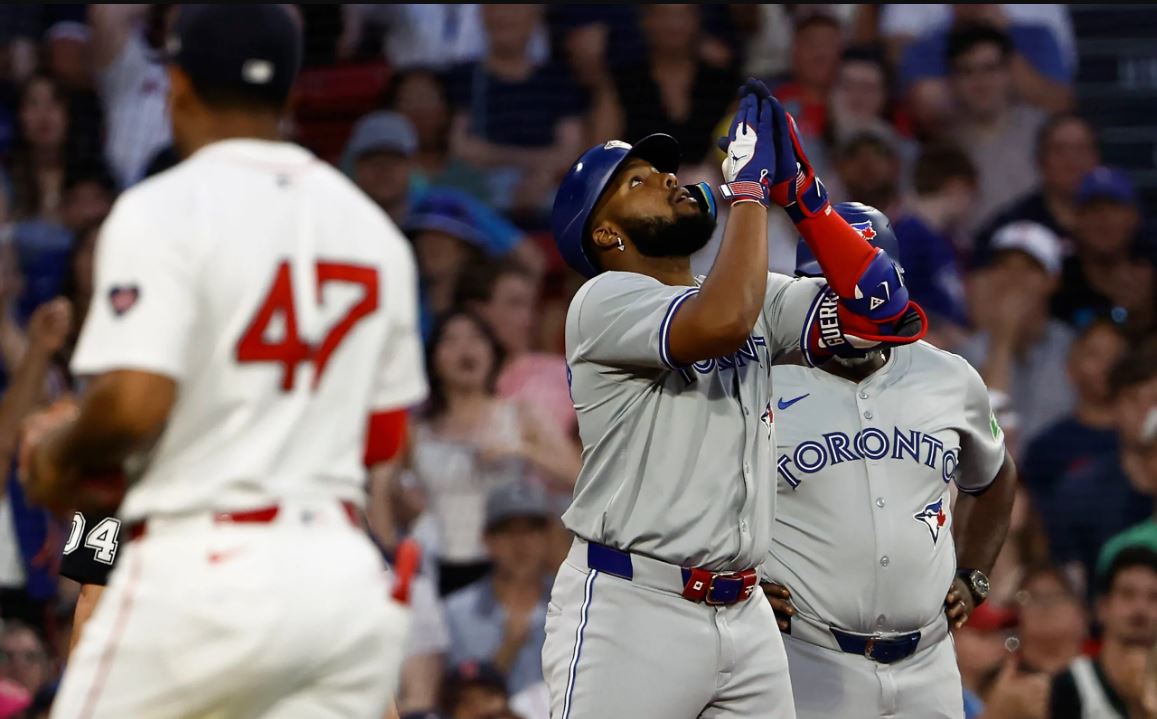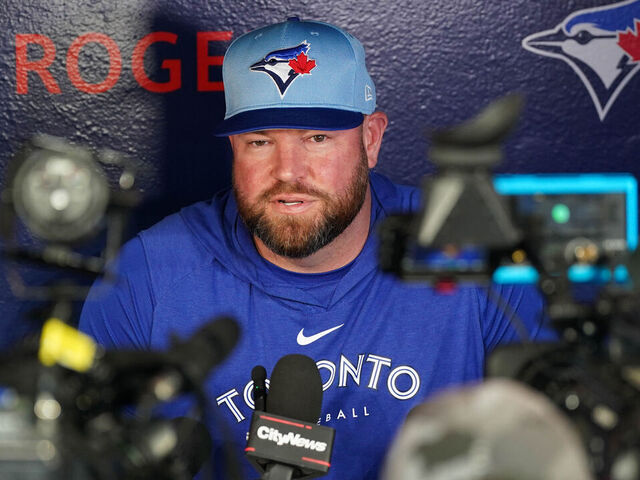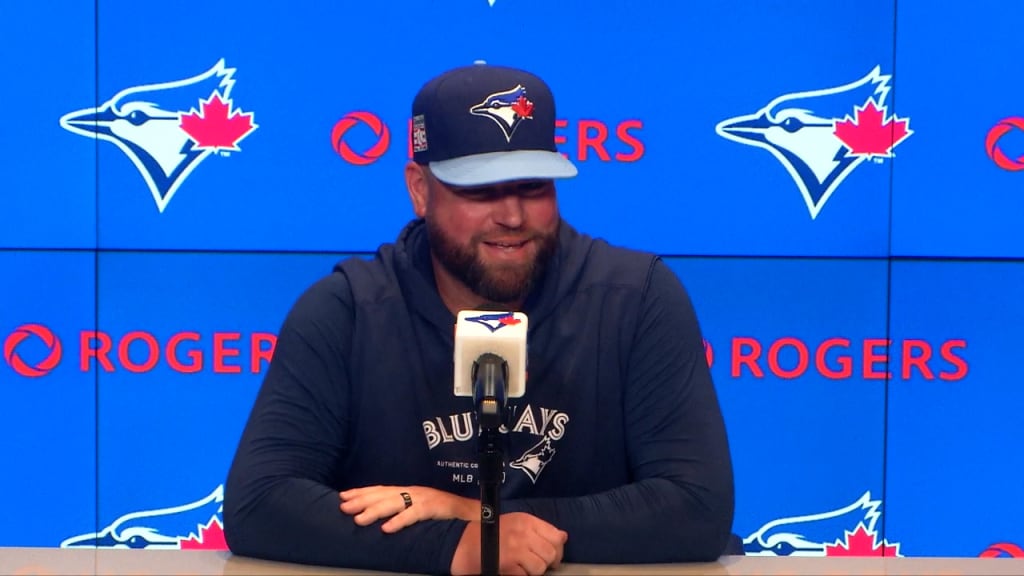For months, I have been contemplating the fate of Yusei Kikuchi’s trade deadline. That seems extremely particular considering how many players are exchanged annually. Why am I interested in this one guy? His lifetime ERA is 4.72, with an ERA of 4.75 this year. When the year ends, he will be a free agent.
Months? I mean, shouldn’t I have been spending my time on something more productive? Most likely. But now that I’m in a better position, allow me to discuss this very amazing deadline transaction: The Blue Jays sent Kikuchi to the Astros last night in return for a plethora of young players, including Will Wagner, Jake Bloss, and Joey Loperfido.
Kikuchi transforms me and other analysts into Fox Mulder: Our desire is to believe. We are discussing a player that possesses one of the most beautiful fastballs in baseball, hands down. It’s in excellent shape. His throwing velocity is from 94-96 mph, with a maximum of 99 mph. Models adore it.
PitchingBot believes that after taking location into account, Sonny Gray’s fastball is tied for the finest fastball overall and the tastiest one thrown by a starter. Relatively speaking, Stuff+ is dubious; it ranks the fastball as the third-best among starters, behind only Kutter Crawford and Zack Wheeler’s heaters.
In addition to his fastball, Kikuchi throws a good slider that reaches 88–90 mph and has a sharp bite for a gyro slider. He finishes with a powerful two-plane curveball and an odd slider that seems to fade and float at the same time. He delivers it deceptively and from an awkward arm slot. Kikuchi can destroy opposing lineups on his own when he’s playing well. This season, he has had ten excellent starts with a 2.64 ERA, 2.61 FIP, 26% strikeout rate, and an extremely low 5.5% walk rate. He had been getting better in Toronto, and this year seemed to be his big break.
Things have not gone well since then. I am referring to a subpar 6.87 ERA, 4.67 FIP, and 13 home runs in just 12 starts. Kikuchi has been consistently shut out, and the Jays have collapsed out of the postseason race at the same moment. His troubles couldn’t have come at a worse time, which left the Jays in an odd situation. Throughout the majority of June, Kikuchi was on fire, and the Jays’ chances of making the playoffs fluctuated between 20 and 40 percent. The team wasn’t prepared to sell when Kikuchi’s estimated trade value was at its highest.
Subsequently, as he deteriorated, the Jays’ chances of making the playoffs began to decline. The lowest point was reached towards the end of June, when they were hopelessly far behind in the standings after going on a seven-game losing streak and going 4-6 against playoff opponents. It was finally time to move Kikuchi, but throughout his seven outings between May 26 and June 28, he had a 7.12 ERA and mediocre peripherals. It appeared like a wise decision to hold onto Kikuchi a little while longer, allowing the trade deadline and a comeback to bring in some serious bidders.
The Jays prevailed, but Kikuchi didn’t really get much better. In July, he has improved marginally, with a 6.59 ERA, 4.03 FIP, and one home run per start in five outings. In addition, he only completed six or more innings in one of those starts. However, Kikuchi is now on the move because time is running out. Perhaps I should say this again: Fortunately, it was discovered shortly before time ran out that the entire fictitious drop in Kikuchi’s trade value was a fabrication. After the Blue Jays rejected a fantastic trade offer from the Astros, Kikuchi is moving to the Gulf Coast to try to make the playoffs.
Kikuchi remains, in my opinion, a solid choice for a starter in the mid-rotation. Though he’s perhaps not as good as he was in the early part of the season, his performance in the last two months has been far worse. Depending on how many home runs he allows, his game either sinks or floats. That has also been the case with his much-loved repertoire of weapons; while they are generally excellent pitches, he frequently places his slider and fastball in risky spots for batters lacking tremendous movement. His pitches are more disruptive in terms of timing than they are pure bat-missers, and leaving it in the centre doesn’t work as well.
That combo is presumably not unfamiliar to the Astros. A pitcher who appears powerful when the ball remains in the yard but is prone to home runs? Sounds like late-career Justin Verlander or Hunter Brown. However, the Astros have had trouble this season with starting pitchers. In June, they lost two starters who would be crucial to their success all season. It has been over a month since Verlander’s injury.Since Lance McCullers Jr. hasn’t pitched this season and his recovery has been difficult, it’s unclear when he’ll be back. Their strategy of rotating three reliable players (Brown, Reinaldo, and Framber Valdez) and then hoping for rain isn’t the greatest one for a stadium with a retractable roof.
Even worse, the team is discussing using a six-man rotation to preserve its arms because Blanco and Brown are about to hit their career highs in innings pitched. Kikuchi’s addition considerably relieves the pressure on the top trio. The Astros will undoubtedly be pleased with someone going out there every fifth or sixth day and putting up five or more decent innings, even though he isn’t exactly an innings eater.
Jake Bloss, the star player moving to Toronto as part of the trade, is one of the guys Houston has turned on for innings in recent weeks. He’s been incredible, a remarkably quick climber who only last year was selected in the third round of the draft after dominating the minor leagues. He was a standout player at a tiny institution who, in his senior year, transferred to Georgetown, where he made an impression against some of the toughest opponents he had ever faced. For the past three years, he has been raising the bar and surprising everyone. His command appears to have improved after spending the winter in the Houston pitching lab, and in 2024, he will undoubtedly have the team’s trademark rising fastball cooking.
He’s throwing multiple quality pitches and may even have decent command, so this isn’t an illusion. In the minor leagues, he achieved a sub-2.00 ERA and a strong 3.20 FIP while striking out 27% of batters and allowing very little hard contact. His first three big league starts have not gone well, but he destroyed minor league batters so thoroughly that I totally see why Houston pulled him up to the majors to see if the magic might continue. More precisely, the A’s had four home runs off of him in just four innings, making it a difficult start to his third major league stint. Though I believe the Astros also came to that decision, which is why they made the trade, I would prefer to give him a little more time in the minors to grow.
This would have been a reasonable one-for-one trade: a mid-rotation rental for a rapidly growing pitching prospect. But then, inexplicably, the Astros scored a lot more. Joey Loperfido was our number three prospect until he graduated from prospect status early this season, making Bloss our number two prospect. He is a large, adaptable outfielder with true-outcome fever; in addition to walking and striking out a lot, he boasts 30-home run power. With the potential to play all five positions (outfield, first, and second), our prospect staff graded him at 45 FV. He also has a chance to hit well enough to be a regular player.
There’s still more, though. Will Wagner, the son of Billy Wagner, is the final player in the trade. He is an upper-minors infielder who prioritises contact over power. This broad archetype is probably familiar to you; when everything goes according to plan, it’s Brendan Donovan. When it doesn’t, your team will deploy a variety of utility infielders to cover roster gaps. This year, Wagner is hitting.307/.424/.429 in Triple-A with more strikeouts than walks, but I believe that line overstates his likely impact in the major leagues. Pitchers will relentlessly hit him with pitches until he begins to make them pay, which has proven to be difficult for him, as you may have seen based on the similarities between his OBP and slugging.
Wagner will most likely end up in the majors as a part-time player, if only at the bottom of the lineup. After this season, he becomes eligible under Rule 5, and given the Jays’ roster position, I believe it’s likely that he’ll wind up on the 40-man roster. The Astros probably wouldn’t have room for him, so this inclusion seems like a way to sweeten the pot and get the transaction over the finish line.
But why, exactly, did the Astros have to provide a sweetener? I think the Blue Jays have won big with this. When it comes to optimising mid-round draft picks, the Astros are masters at it. Wagner, Loperfido, and Bloss are all enormous success stories—unheralded choices that have much beyond their projections. However, the group turned around and flipped them for a mid-rotation rental after putting in so much effort.
I can see why the Astros require Kikuchi. However, Bloss’s return was about what I would have expected the Jays to get for selling him, based on returns at the last three trade deadlines. If the Astros were really anxious to close the deal, they might consider adding one or two Wagner-type players. And Loperfido? That is a lot of talented young guys for two to three months of a competent but unspectacular pitcher.
The more I think about this, the more I believe that Kikuchi was specifically what the Astros wanted. Someone would have dealt them an arm rather quickly if they had called every baseball team in the league and said, “We need beginning, and we’ll offer Jake Bloss plus.” For less than this return, I would trade a few of the starters who haven’t been moved yet (Jack Flaherty and Zach Littell come to mind), and I have a feeling that their clubs could as well. I can only understand this if the Astros were ready to miss their player and expressly wanted Kikuchi. That’s how an offer becomes something that makes experts everywhere go, “Whoa, really?”
In light of this, I believe it’s appropriate to slightly raise expectations for Kikuchi. A team undoubtedly has a purpose when it desires someone with such fervour. However, I also believe that the Astros front office is a bizarre jumble of new and old, and that they are operating against each other. The organisation that carefully chooses college pitchers with intriguing peripherals and then guides them to reach new heights in their game is probably not the same organisation that sends out a mountain of top prospects for a starter who fills the middle of the rotation for more than two months. Even while I can see the Astros’ motivation in the trade, I still believe they gave up too much.





